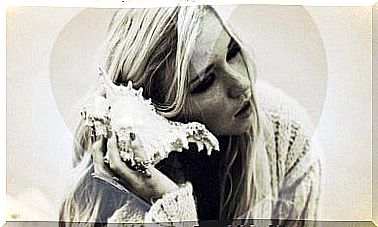Why Do Our Cognitive Patterns Always Precede Us?

In the words of Jeffrey Young, cognitive schemas refer to those stable, embedded, and enduring structures that develop and develop throughout an individual’s life.
In simpler terms, it is about “the way we are and behave in the world”. When these patterns are dysfunctional, we may see maladaptive behaviors. For example, the person is confronted throughout his life with people who are not beneficial to him. Or the person may have toxic or destructive behaviors. In addition, she may have disproportionate reactions. Finally, in general, the person is confronted with problems or situations that are not desirable.
These unwanted situations appear quite frequently. This then triggers a pattern that the person is usually not aware of. Usually she feels lost because she is unable to explain what is really happening to her.
These patterns have certain characteristics in common. According to J. Young’s scheme therapy, the main characteristics would be as follows. First of all, they are considered a priori to be true. The patterns are renewed. They are resistant to change and are often dysfunctional. In addition, they are usually generated and activated by environmental experiments. Finally, they are also characterized by a high degree of affect.
In addition, sometimes cognitive patterns are nurtured or sown as a result of certain traumatic or negative experiences in the past. These patterns then acquire a permanent character. And this, precisely because of the models on which they feed.

A cognitive schema that precedes us
When we say that the cognitive schema precedes us, what do we mean by that? When we try to reflect on the situation we are faced with, the past experience is so deeply ingrained, internal and emotional, that the pattern has already marked the way forward. It has already started.
Think for a moment of situations in your daily life in which something repeats itself. For example an emotional dependence within the framework of a couple. Or, putting the needs of others before your own. But also fall into certain addictions … It can be any behavior that harms you. A behavior that is always there, without you being able to get rid of it. And this, even if it hurts you. Do you recognize yourself there?
Cognitive patterns are deeply emotional
Also, if someone asks you why you keep doing what you are doing, you may not be able to give them a clear answer. You know this is wrong. It is painful and it makes you suffer. But it is very difficult, if not impossible, for you to abandon this path.
This has to do with the fact that the cognitive schema is deeply emotional. It comes from your instincts. It is the result of various experiences that you had during your childhood. He then becomes like an indomitable beast. When you are faced with this “risky situation” and you realize it, you don’t know how, but you have already lost control. The scheme has already done its job.
How can I change my cognitive patterns?
Inertia itself will not make it possible to break with these patterns . At least, it is very difficult for this miracle to happen. Therefore, you are going to have to do a conscious analysis exercise in which decision and will come into play.
However, to help us in this process we have different psychological strategies and techniques. They can be cognitive, behavioral or emotional. With self-recording, it’s convenient to start monitoring situations that in some way are disturbing you emotionally. And not only that, but also those that cause you to act contrary to how you would on a conscious level.

It is therefore interesting that the person understands and assimilates this model. You have to visualize it in your daily life. Also, stay alert for situations that resemble this and in which this emotional dependence is present, with all that that entails. For example, all this should be noted in a personal therapy journal. Thus, the behaviors and thoughts that these situations have in common can be analyzed. Do you often give up your social relationships? Finding it hard to end relationships? And this, even if they do not bring you anything?
Identify weak points and develop strategies
First of all, it will be necessary to identify the weak points. Then you will develop strategies to try, as much as possible, to prevent this from happening. In this sense, to break the patterns is to face up. Not by opposition, but by intelligence, to what the diagram asks of us.
If you have a hard time saying no, try not to shy away from situations where you need to be assertive. If you are caught in toxic relationships for fear of loneliness. Then start exploring all the positive things you can do in that loneliness you fear.
Admittedly, it will be uncomfortable at first. However, you have to be prepared to get to the point where you can tolerate this discomfort. Indeed, you are not used to choosing this way of doing things because usually your automatisms prevent you from doing so.
On the other hand, sometimes we will have no choice but to live with the aftereffects of these patterns for long periods of time. And this, despite our best efforts.
In this case, it will take longer for you to change the way you are in the world. But you will still move towards this goal if you extend your locus of control beyond your cognitive patterns.










